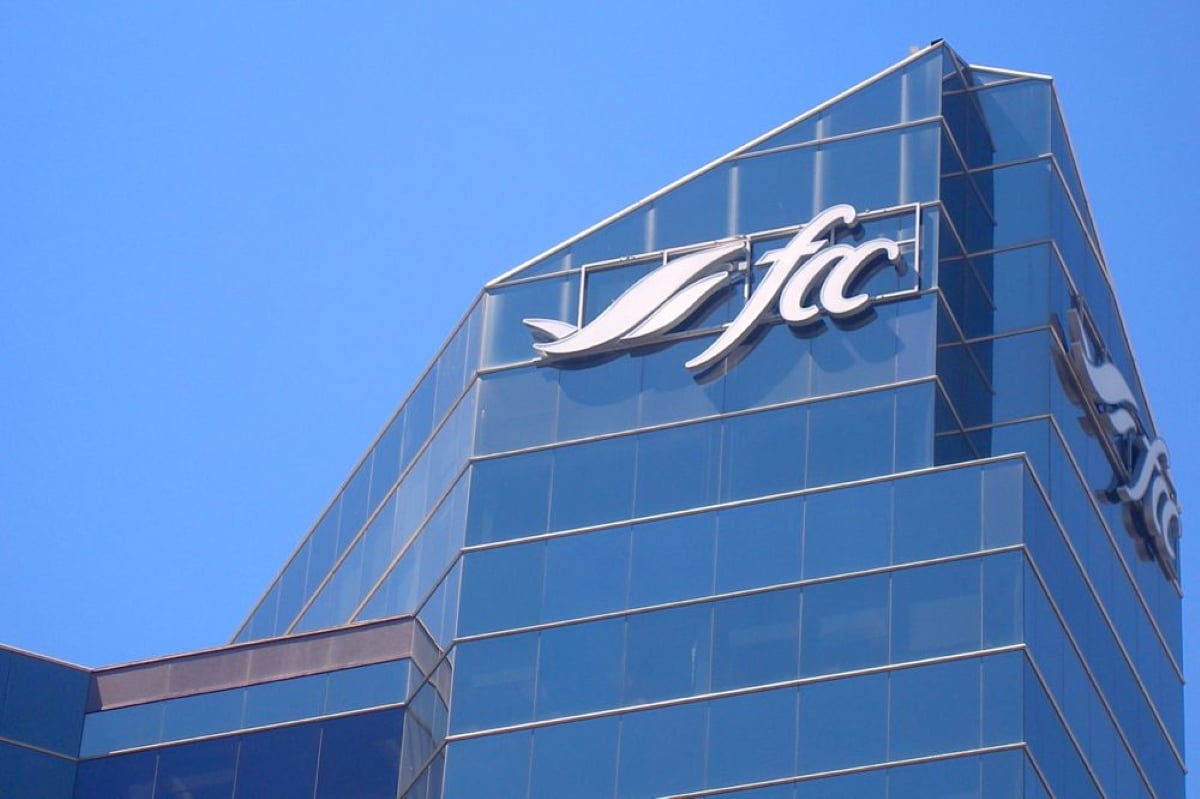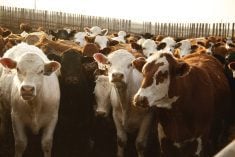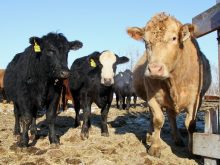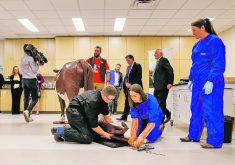SASKATOON — The veterinarian shortage won’t be eased in the short-term by adding more seats at veterinary schools, said a panel of veterinarians at a conference last month.
Nor will allowing cattle producers to do some procedures on their own solve the problem in rural areas, they said.
“Chronically, in Canada, we have not been graduating enough vets for a long, long time,” said Dr. Gillian Muir, dean of the Western College of Veterinary Medicine. “There’s always been issues with shortages of rural animal veterinarians, but now what’s really happened is there’s a crunch because there’s a shortage of vets in cities as well.”
Read Also

Farm Credit Canada partners with major Toronto innovation hub
A FCC parntership with MaRS Discovery District aims to solve technology problems in food supply chains.
The WCVM will take more students next fall after the Saskatchewan government took action to fund five more than the usual 20. But those students are years away from entering the workforce.
Muir said during the discussion at the Agricultural Producers Association of Saskatchewan annual meeting that one shorter-term solution is faster licensing of foreign-trained veterinarians.
They have to pass a clinical and practical exam, but that is only offered four times per year at WCVM, when its regular students aren’t using the facilities.
Muir said the four-day exam is a huge undertaking and WCVM is the only place in Canada that hosts it. Right now, it adds 50 to 60 vets to the workforce each year.
A feasibility study looking at the facilities, programs and resources is underway and one outcome could be an expansion at WCVM to become the national testing site, she said. The exam could then be offered more often.
The president of the Saskatchewan Veterinary Medical Association, Dr. Sarah Allin, said the association has heard calls for producers to be able to do some things that vets do because they can’t access veterinary service.
She has practised for 17 years in Swift Current and said getting new vets into large animal practice, or even keeping current practitioners, likely requires changes but it isn’t clear what those are.
Some producers have said they should be able to pregnancy check their own cattle, and Alberta allows veterinary technologists to do that under indirect supervision, she said.
However, Allin said clinics have to be able to stay in business.
“The issue we see as practising veterinarians (is) we also have to be able to pay these veterinarians and if we’re looking at cutting them out of everything else, but we have to pay them to do C-sections from April to May, we have to look at the feasibility of that too,” she said.
The province’s chief veterinary officer, Dr. Stephanie Smith, said the veterinarian act would have to be opened to make those types of changes. She agreed with Allin that some of those smaller procedures or processes are the bread-and-butter for clinics.
“I wouldn’t want to be too hasty and shoot ourselves in the foot and end up closing more clinics because we’ve taken away what they rely on and what they maybe use to establish a veterinary-client relationship,” Smith said, referring to the veterinary-client patient relationship mandated by Health Canada.
Allin said it is financially difficult to operate strictly as a large animal vet in a very rural area and many have to treat companion animals to supplement their income. The lack of companion animal vets in urban areas is trickling down to rural areas, she said.
“In April if I’m on my own in a mixed practice and I can’t send these small animal emergencies to the city anymore because there are no city small animal veterinarians, it really burns out your vets,” she said. “I think it’s very important that we work together on that and that we don’t completely forget about the companion animal side of it because it’s important for the viability of those smaller practices too.”
Smith said chief veterinary officers across the country are working together on a jurisdictional scan of strategies that work to recruit and retain vets. Some provinces are using Canadian Agricultural Partnership funding to support the industry through things like equipment. Some places offer signing bonuses.
Lorne Ball, the Agricultural Producers Association of Saskatchewan representative in the Rural Municipality of Clayton, said he sits on the Norquay veterinary board and they have been looking for a vet for about 10 years.
“We do own a publicly owned clinic and I’m wondering what we can do to attract someone,” he said.
Allin said new graduates need and want mentorship. Veterinarians who are retiring or leaving can’t always, or don’t want to, provide that.
“We need to be able to reassure them that there’s going to be some sort of mentorship there in some form,” she said.
For cattle producers, that could be helping a veterinarian who doesn’t have a farm background or much large animal experience better understand the industry.
“I don’t think the financial part of it is honestly the biggest issue. I think the mentorship and the after-hours are the bigger issues that need to be addressed to keep people in smaller areas,” she said.
Work-life balance is a huge concern in small practices. Smith said veterinarians work long days and deal with complaints that they charge too much, even when they’re working until midnight.
Asked if rumours that some large animal veterinarians left Saskatchewan because of more stringent oversight by SVMA were true, Allin said she joined the council in 2019 because she had heard the same thing.
“I can tell you after three years on council that we do not have any stricter bylaws than any other province,” she said. “We don’t make the laws, but we do have to uphold them.”
She said the membership has to follow those rules or the SVMA won’t have a role and the profession would end up regulated by people who don’t work as vets and have no knowledge of the cattle industry.
Another delegate, whose daughter is a veterinarian, said veterinary students should have more instruction in how to run a business and what the full-time work and life is going to be like.
He noted that most WCVM graduates are female and suggested they burn out faster.
The three panelists disputed that, with Muir noting all students are taught about contracts and business and are well aware, before they enter vet school, of what their lives will be like.
Contact karen.briere@producer.com
















